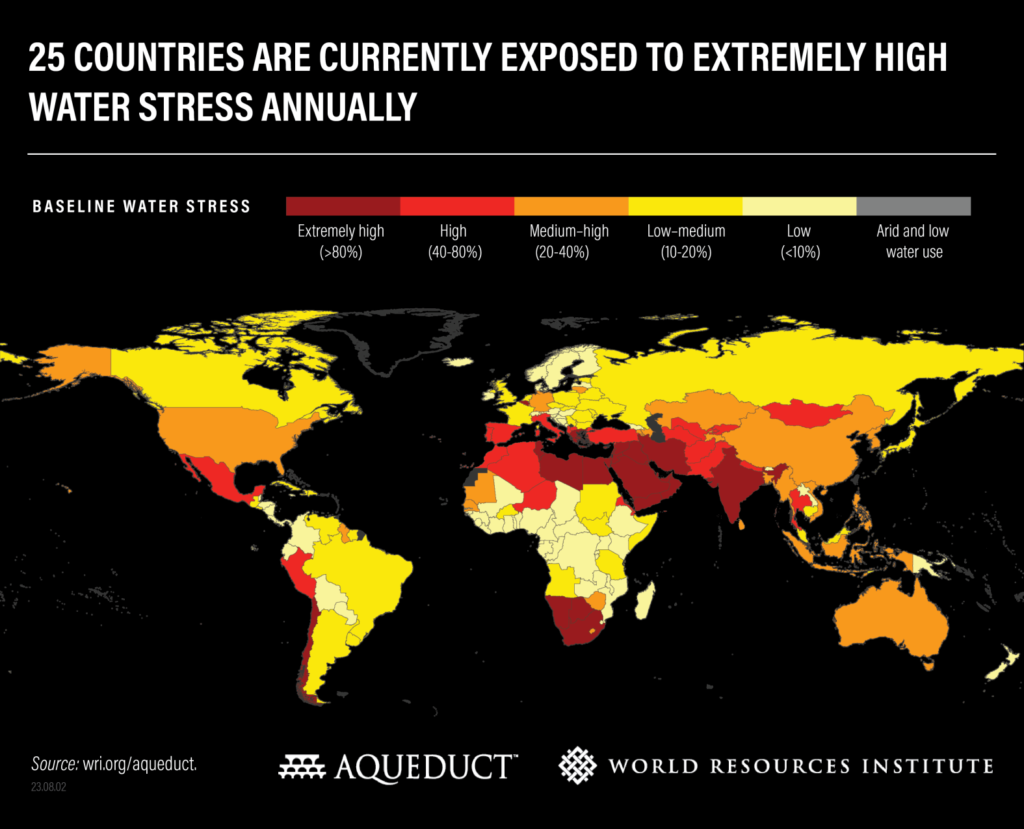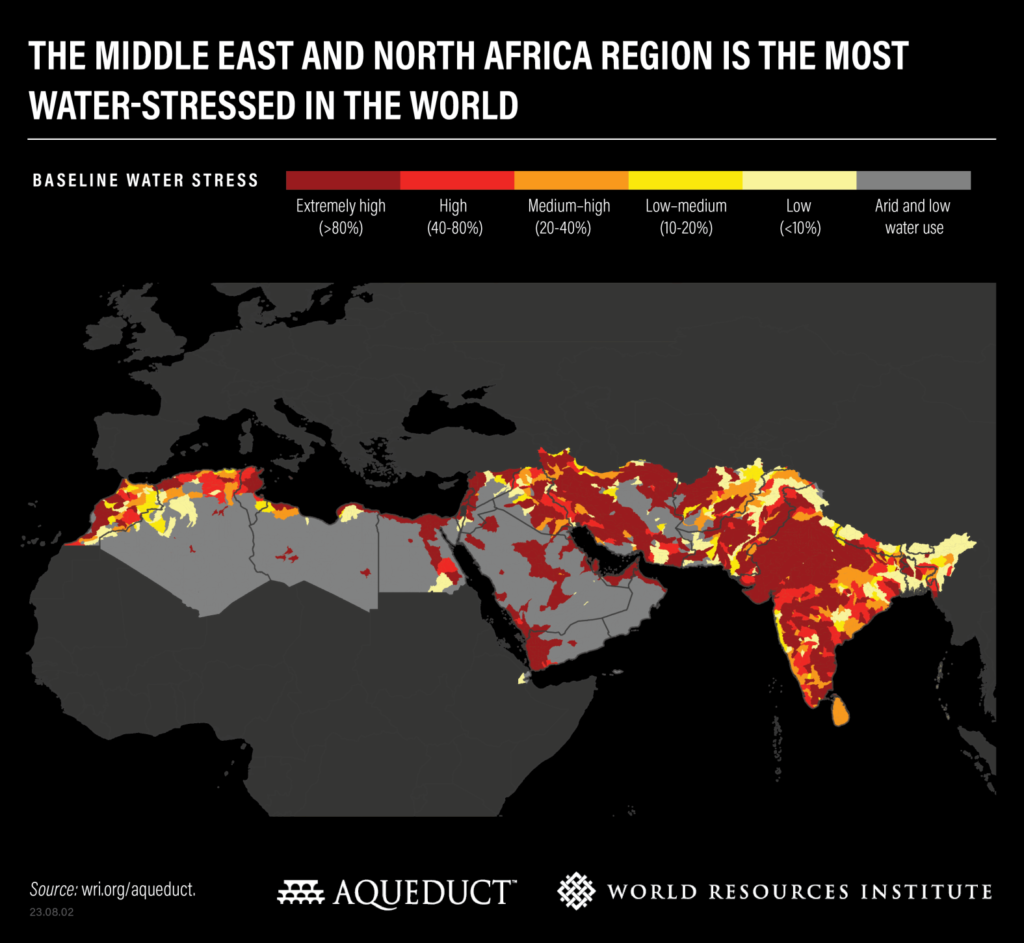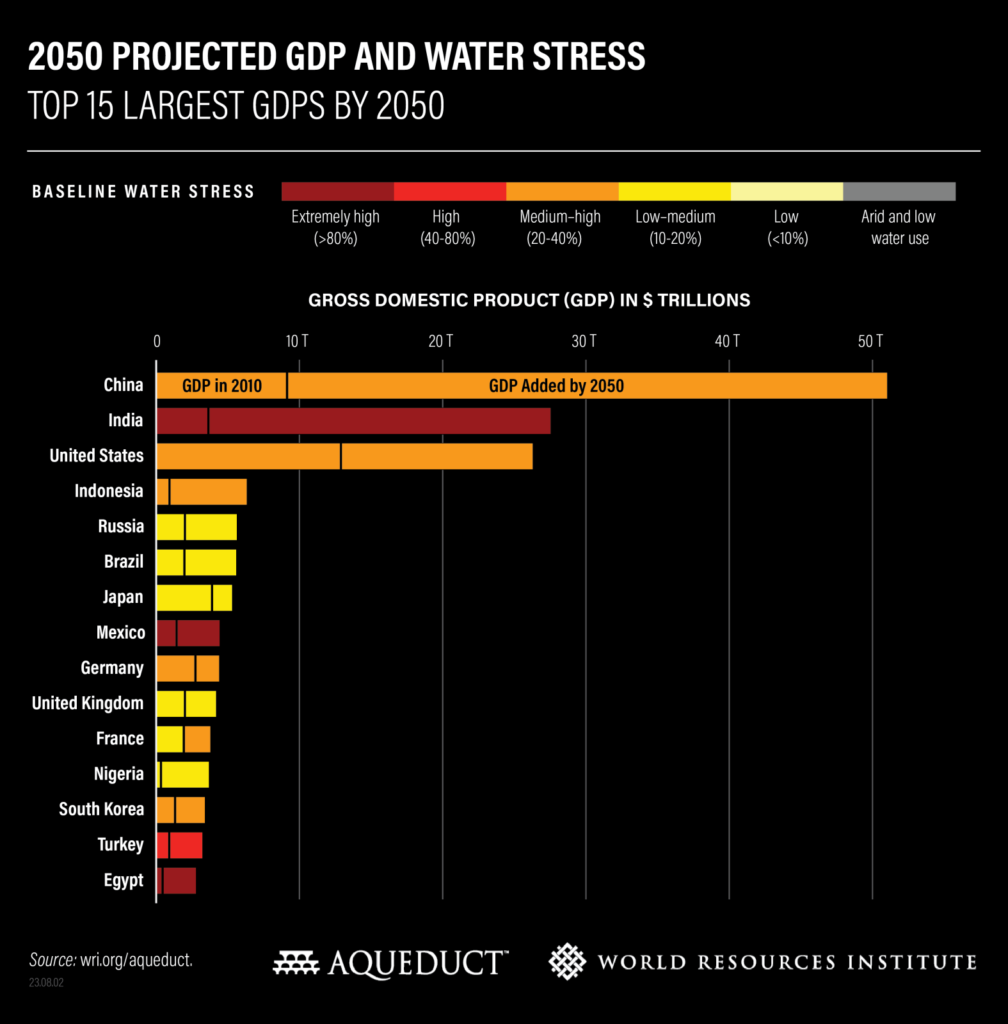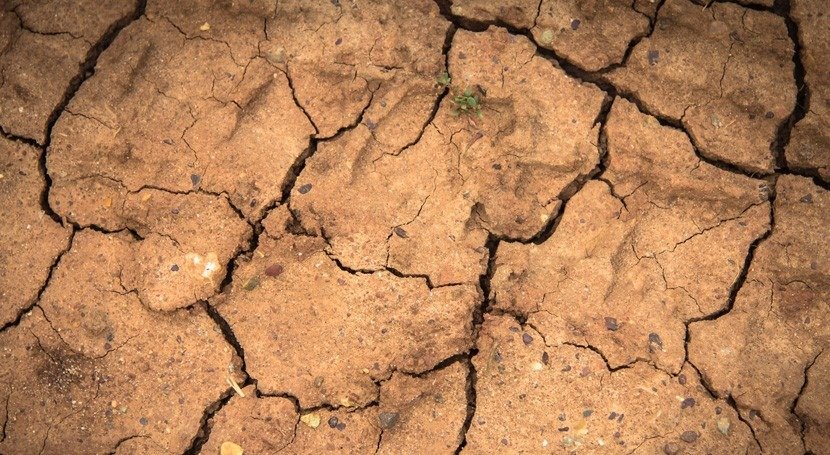According to the Aqueduct Water Risk Atlas, a quarter of the global population in 25 countries experiences severe water stress, depleting most of their available water supply. Additionally, around 4 billion people, or half of the world’s population, face high water stress for at least one month annually.

Living in an environment with limited access to water poses a threat to people’s well-being, employment, food supply, and energy stability. Water plays a crucial role in agriculture, energy production, public health, social equality, and achieving global climate objectives.
If water management does not improve, water stress will worsen due to population growth, economic development, and climate change.
What’s Causing Global Water Stress?
Water stress is a measure of the competition for local water resources, determined by the ratio of water demand to renewable supply. Places with a smaller gap between supply and demand are more likely to experience water shortages. A country with “extreme water stress” is using at least 80% of its available water supply.

Data show that 25 countries are currently exposed to extremely high water stress annually. Even a short-term drought puts these places in danger of running out of water and sometimes prompts governments to shut off the taps. We’ve already seen this scenario play out in many places around the world, such as England, India, Iran, Mexico, and South Africa.
The demand for water worldwide has increased significantly since 1960, surpassing the available supply. It is rising due to factors such as population growth and the expansion of industries like agriculture and manufacturing.
According to data, 31% of global GDP — a whopping $70 trillion — will be exposed to high water stress by 2050, up from $15 trillion (24% of global GDP) in 2010. Just four countries — India, Mexico, Egypt, and Turkey — account for over half of the exposed GDP in 2050.

However, inadequate investment in water infrastructure, unsustainable water usage policies, and climate change are all impacting the amount of water that is available. Without intervention — such as investment in water infrastructure and better water governance — water stress will continue to get worse, particularly in places with rapidly growing populations and economies.

It’s good to understand the state of the world’s water supply and demand, but water stress doesn’t necessarily lead to water crisis. In fact, addressing global water challenges is actually more affordable than expected, amounting to only 1% of GDP or 29 cents per person per day from 2015 to 2030. However, the main obstacles to implementing these cost-effective solutions are the lack of political determination and financial support.
Reference- Aqueduct Data, WRI Report, Clean Technica, National Geographic, UN website & data






